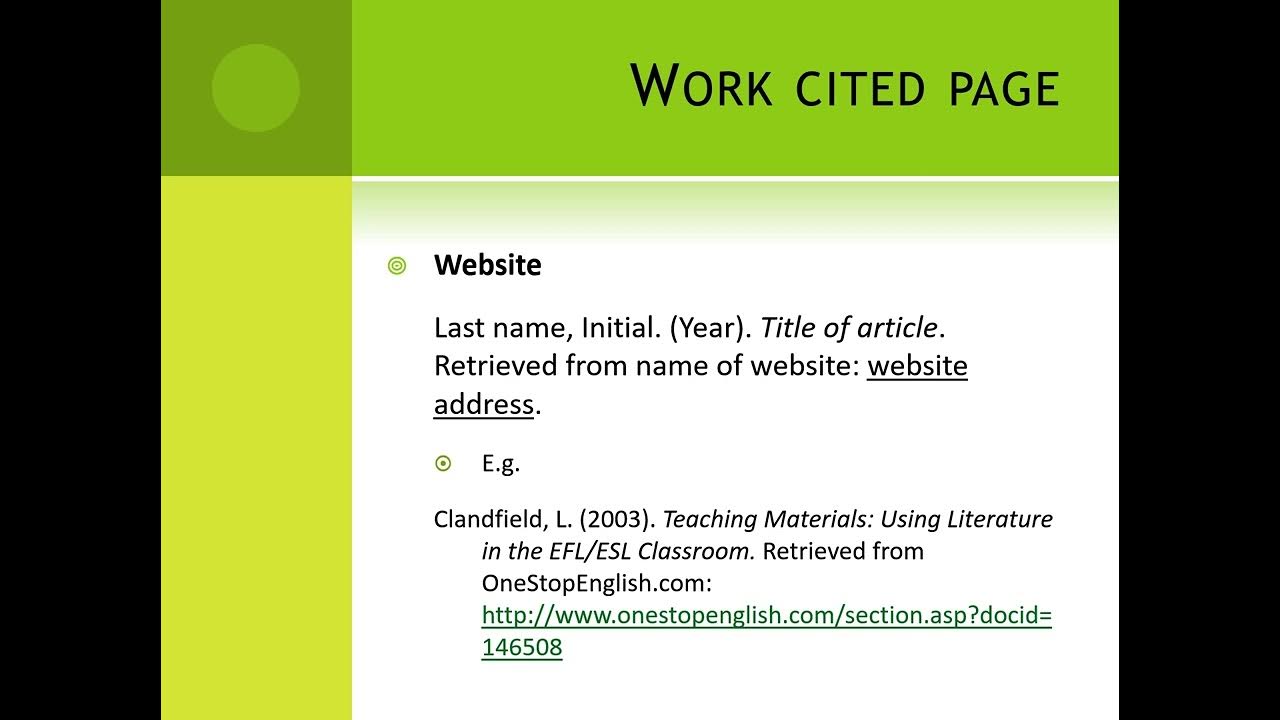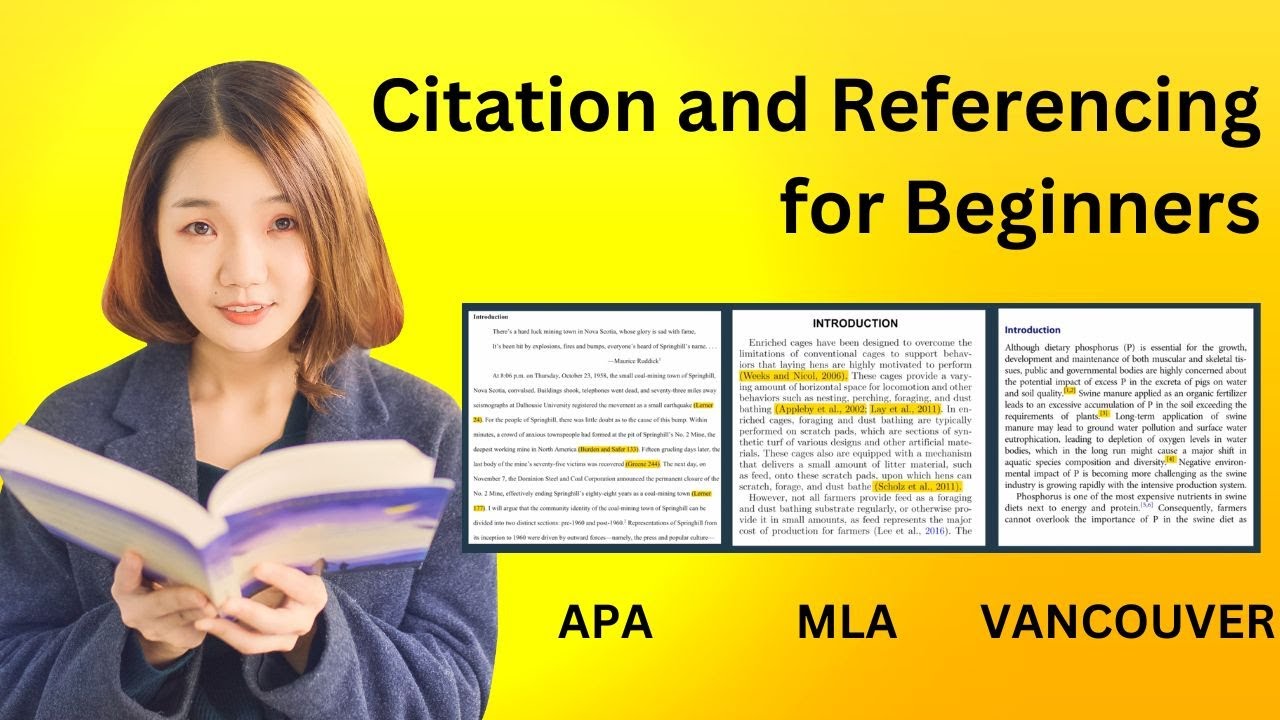AP Seminar: Including Citations and Modeling Virtual Peer Review
Summary
TLDRThis educational video features Jerry Gonzales and Mrs. Allison Malloy guiding students through the final stages of paper writing. They emphasize the importance of proper citation, grammar, and peer review for enhancing readability and academic integrity. The instructors provide tips on integrating citations as they write, using consistent styles like APA or MLA, and avoiding common grammatical pitfalls. They also discuss the significance of clear communication, avoiding verbosity, and the strategic use of transition words to improve essay flow. The video concludes with advice on peer feedback, adhering to word count limits, and utilizing editing tools for refining the paper.
Takeaways
- 📝 Importance of Citations: The video emphasizes the necessity of citing sources correctly and consistently throughout the paper to avoid losing points on the rubric.
- 🔍 Cite as You Go: Encourages students to cite sources as they write to avoid forgetting which sources were used and where specific information was obtained from.
- 🎯 Rubric Clarity: Explains the grading rubric's criteria for citations, distinguishing between zero, three, and five-point scores based on the accuracy and consistency of citations.
- 📚 Consistency in Citation Styles: Stresses the importance of using either APA or MLA consistently and not mixing the two styles in a single paper.
- 📚 Parenthetical and Narrative Citations: Discusses two methods of citing sources in the text: parenthetically and by integrating the author's name into the narrative.
- 📝 Grammar and Style: Highlights the significance of correct grammar, punctuation, and sentence structure for clear communication and high scores on the rubric.
- ✍️ Writing Elevation: Points out that effective writing can elevate the message of a paper, but warns against overcomplicating language which can detract from the argument.
- 🔍 Peer Review Strategies: Suggests using questions and clarification for effective peer review, rather than generic positive feedback that doesn't provide constructive criticism.
- 📉 Avoiding Wordiness: Advises against unnecessary repetition and the overuse of certain words like 'that' to reduce word count and improve conciseness.
- 📚 Utilizing Tools: Recommends using tools like Hemingway app, Pro Writing Aid, and others for grammar, style, and word count assistance.
- 👂 Reading Out Loud: Suggests reading the paper out loud as a method to catch errors and improve the flow of writing that a computer might not detect.
Q & A
What is the main focus of the video lesson presented in the transcript?
-The main focus of the video lesson is on the finalization of a paper, specifically looking at citations, spelling, grammar, and peer review strategies to improve the readability and overall quality of the paper.
Why is it recommended to cite sources as you write the paper instead of adding them afterward?
-Citing sources as you write helps to avoid forgetting which sources were used or where in the source the information was obtained from, thus preventing potential issues with incomplete or incorrect citations.
What are the consequences of missing citations or not having a work cited page in a paper?
-Missing citations or lacking a work cited page can result in earning zero points for the rubric row that assesses citations, which is avoidable and significantly impacts the paper's score.
What are the differences between earning three or five points for rubric row six?
-Three points are earned if the citations are generally consistent but have some errors, while five points are awarded for accurate and consistently styled citations with very few flaws throughout the paper and no issues with the reference page.
What are some common mistakes students make when it comes to citations and how can they be avoided?
-Common mistakes include inconsistent or uneven citations, poor attributing phrasing, and reliance on URLs instead of proper citations. These can be avoided by adhering to a consistent citation style, integrating author names properly, and using tools like the citation button in academic databases to generate correct citations.
What is the importance of using a variety of citation methods in a paper?
-Using a variety of citation methods, such as parenthetical citations and author integration, demonstrates the mark of an effective writer and helps to avoid monotony in the writing style, making the paper more engaging.
Why is it essential to cite any time you are directly quoting, summarizing, or paraphrasing the work of another author?
-Citing when quoting, summarizing, or paraphrasing ensures proper attribution of the source material, which is crucial for academic integrity and gives credit to the original author's ideas and research.
What is the role of grammar, particularly the use of commas, in ensuring the clarity of a paper?
-Correct grammar, especially the use of commas, helps to clearly communicate ideas by separating clauses, setting off non-essential information, and avoiding grammatical errors that can confuse the reader.
What are some strategies to improve the flow of ideas in a paper?
-Strategies to improve the flow of ideas include using the appropriate transition words to reflect the intention of the writer, ensuring clear topic sentences, and maintaining a logical organization of paragraphs.
How can peer feedback be used effectively to improve a paper?
-Effective peer feedback involves asking questions, seeking clarification, and providing specific and actionable insights tied to the rubric. It should prompt the writer to reflect on their own thinking and make necessary revisions.
What are some common pitfalls students encounter when revising their papers?
-Common pitfalls include trying to do too much by overcomplicating the language, not properly citing sources, and neglecting to address the research question or multiple perspectives. Students should focus on clear communication and adherence to the rubric.
Why is it important to keep the word count within the specified limits?
-Keeping the word count within limits ensures that the paper is concise and focused on the task. Excessive wordiness can lead to a waste of effort and may result in graders not reading beyond the specified limit.
What are some tools or strategies that can help with editing and revising a paper?
-Tools like Expresso, StyleWriter, Hemingway app, and others can help with editing and revising by checking grammar, style, and word count. Additionally, reading the paper out loud can help identify areas that may not sound right or could be improved.
Outlines

Esta sección está disponible solo para usuarios con suscripción. Por favor, mejora tu plan para acceder a esta parte.
Mejorar ahoraMindmap

Esta sección está disponible solo para usuarios con suscripción. Por favor, mejora tu plan para acceder a esta parte.
Mejorar ahoraKeywords

Esta sección está disponible solo para usuarios con suscripción. Por favor, mejora tu plan para acceder a esta parte.
Mejorar ahoraHighlights

Esta sección está disponible solo para usuarios con suscripción. Por favor, mejora tu plan para acceder a esta parte.
Mejorar ahoraTranscripts

Esta sección está disponible solo para usuarios con suscripción. Por favor, mejora tu plan para acceder a esta parte.
Mejorar ahoraVer Más Videos Relacionados

AP Seminar Performace Task 2: Citations, Writing Style and Peer Review

How To Improve Your Academic Writing IMMEDIATELY | 3 Tips For PHD Students

MAHASISWA WAJIB NONTON! APA SIH KUTIPAN ITU?!

UHB 30102: ENGLISH FOR TECHNICAL PURPOSES - LITERATURE REVIEW

Citation and Referencing for Beginners Part II

Higher Level Essay - 10 Common Mistakes
5.0 / 5 (0 votes)
